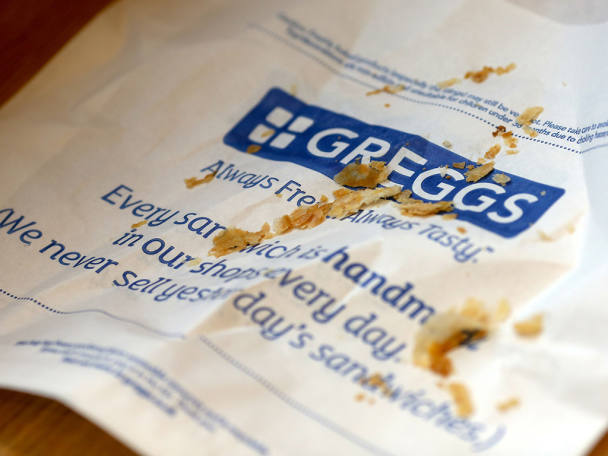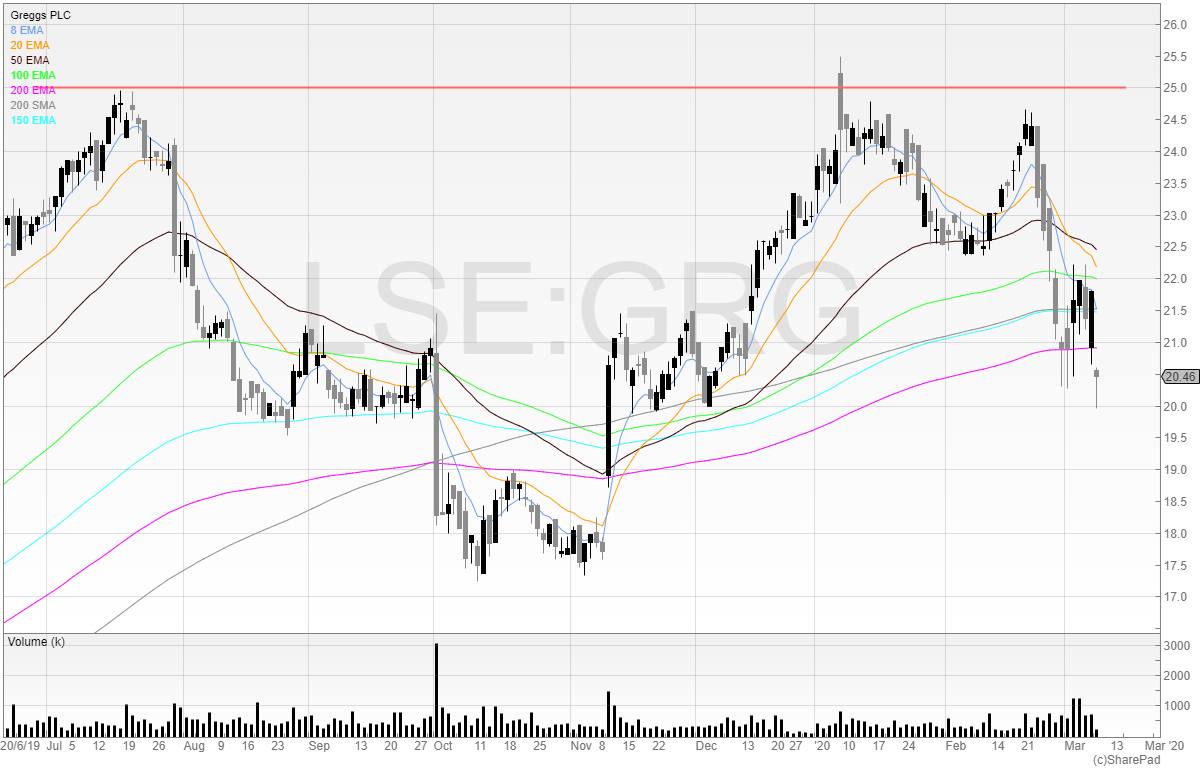I am a big fan of Greggs (GRG) given that 1) it is a local business for me, and 2) I like pasties. It was founded in Longbenton, Newcastle, not far from where I played football at university, and has since become the UK’s biggest baker.
The share price over the past year has been the result of shrewd management tapping into the vegan trend early, with the company’s vegan sausage roll proving a hit well before many other competitors began to see the potential market. It’s a well-run business, relentlessly increasing like-for-like sales and opening more units, mopping up in an environment that has proved so difficult for many businesses to turn a fair profit.
The demise of the high street is well documented, but businesses with a niche have managed to thrive. Companies such as Games Workshop (GAW), which offer customers something different, have avoided the fate of businesses suckered in by the ‘me-too’ casual dining crisis, or who struggle to offer a competitive offering such as Marks and Spencer (MKS).
Greggs is an easy business to like, with its staff sharing a £7m bonus, as well as the 10 per cent profit-sharing scheme it has for its employees. Just a few weeks ago, chief executive Roger Whiteside announced that the company would pay staff who have toself-isolate because of coronavirus.
It’s a shame then, that I am now looking to short Greggs. However, a share price is just that, and emotional attachments to companies are not conducive to trading success. While Greggs was one of my biggest winners last year trading and holding from the gaps, any sense of loyalty to a company ends immediately when I close my long position.
In Chart 1, we can see how Greggs gapped up and carried on rising on news in February and May last year. There was a big sell-off in October on big volume, and the stock did not gap up. It then traded below all moving averages, but in November returned to form with the stock gapping up and rallying on heavy volume.
In 2019, the company was experiencing an earnings upgrade cycle, whereby the stock had beaten expectations and so brokers were forced to upgrade earnings. Riding earnings upgrade trends can be a great strategy and a profitable one indeed for swing traders. If markets were efficient, then the stock would uncross at the auction and volatility would be limited. Yet many stocks gap up and continue to rise – despite theory being that all information is priced in. That’s the difference between theory and reality. In theory, there is no difference between theory and reality. But in reality – there is. And whilst this strategy may work for some time on a stock, every strategy works until it doesn’t.
Looking at Chart 2, we can see that Greggs has failed to surpass 2,500p on three occasions, signifying resistance. Earlier this year, the stock gapped up, rallied, and closed red on larger-than-average volume. Failing to break the all-time high and selling off with volume are two indicators that the trend could be changing.
In February, the stock failed to reach the resistance zone and instead has now fallen below all the moving averages.
Coronavirus fear has certainly thrown a spanner into many local economies. Given the outbreak in Italy it is fair to assume that it will eventually become more widespread in London, and spread outwards. If that happens, then high-footfall areas will be hit – people are already (bizarrely) stocking up on toilet roll. Greggs’ strategic success has been to place units in heavy-footfall areas, and so it is logical to assume that a decline in footfall would lead to a decline in sales.
The next support zone now that the stock has fallen through the 200 moving averages is around 1,750p. There has been a lot of price action around this level, with market participants keen to do business here. It’s the previous significant area before the stock rallied, and so this base represents the last bastion of defence for the bulls.
A failure of support for the price here potentially puts the stock into a stage four downtrend. The four stages of a stock is a well-known theory of a stock’s lifecycle, and stage four is the long and protracted downtrend we see when a stock price is in decline.
There are two ways to trade Greggs here, and it depends on how badly the coronavirus hits. The UK government announced earlier this week that it has accepted that there will be significantly more cases in the UK, but the extent of the impact remains to be seen. If I believe Greggs has been unfairly sold off, I’ll look to take a long position just beneath the support zone in the stop-loss liquidity. This is because the closer we can get to the point where our trade idea would be proved wrong, the more we can reduce our risk. If we keep our reward on the trade the same, yet we are able to reduce our risk, then we have improved our risk/reward payout on the trade. By getting ourselves into positions like this repeatedly we can dramatically improve our chances of success in trading the market.
If Greggs fails to hold support then I would want to trade the stock short. There are enough indicators here to validate a bearish view: triple test of the all-time high resistance zone, a sell-off on larger volumes, and the stock now trades below all of its moving averages. Not only that, the macroeconomic environment isn’t looking too supportive either. The next few weeks will be critical for the stock, as we see both how coronavirus and the price action of Greggs unfolds. And if you do venture out for a vegan steak bake or pasty, please remember to wash your hands before you eat it.
You can contact Michael and download his free trading handbook from www.shiftingshares.com











